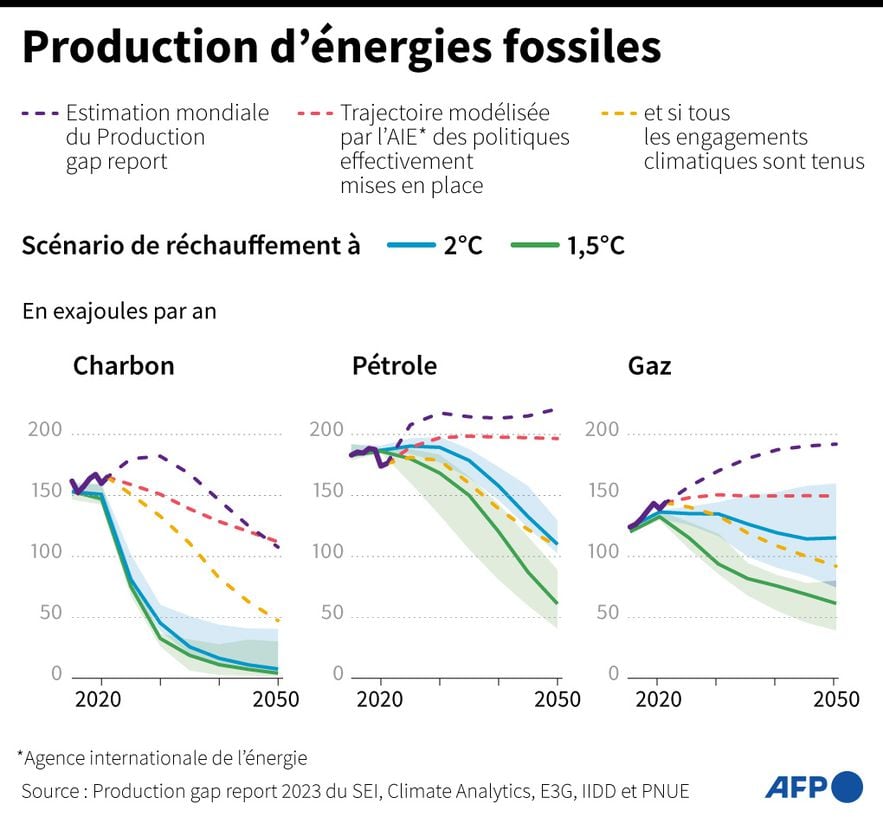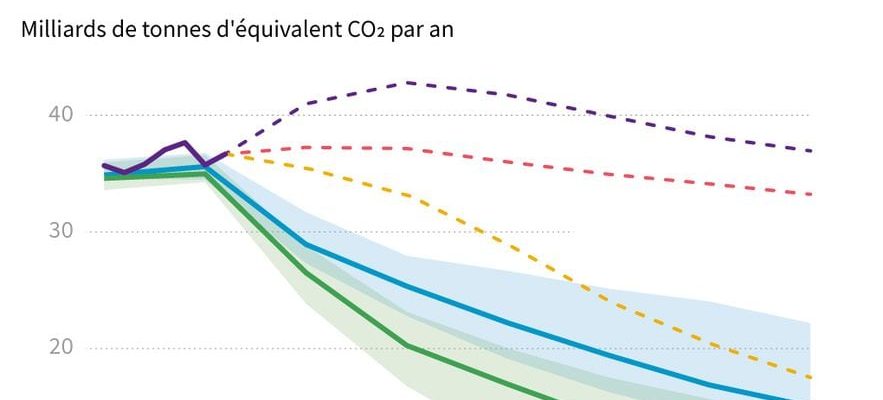Every year, when countries from around the world meet within the framework of the COP, the same findings are drawn up. The planet’s resources are being consumed at a rapid pace and the planet is warming up quickly, very quickly, with considerable consequences. As the years go by, climate agreements, originally full of promise, become a little more obsolete. The objectives of the Paris agreement, supposed to limit warming compared to the pre-industrial era to less than 1.5°C, have been particularly achieved. This year again, a few weeks before COP28 which will be held in Dubai from November 30 to December 12, the world seems to be moving a little further away from this agreement…
For this 28th edition, it is the future of fossil fuels which will be at the heart of the discussions. Most of the world’s largest producers have committed to reaching carbon neutrality by mid-century. However, according to the annual report on the production gap of the United Nations Environment Program (UNEP), the production projects of the 20 main producing countries – including the United States, Germany, China, Russia , Australia and the United Arab Emirates, hosts of COP28 – are going in the opposite direction. In total, these 20 states represent no less than 82% of production and 73% of global consumption of fossil fuels.
Chart showing projected greenhouse gas emissions from global fossil fuel production from 2015 to 2050 and the gap with scenarios to limit global warming to 1.5°C and 2°C, in billions tonnes of CO2 equivalent per year
© / SOPHIE RAMIS, PAZ PIZARRO / AFP
Projects compromising the energy transition
The group of international researchers from UNEP thus notes that government projects would produce, in 2030, 110% more fossil fuels than would be compatible with limiting warming to 1.5°C, and 69% more than what would be would be compatible with a warming of 2°C.
“These plans to increase fossil fuel production undermine the energy transition needed to achieve net-zero emissions, calling into question the future of humanity,” warned Inger Andersen, executive director of UNEP. And added: “From COP28, nations must unite to (achieve) a progressive, managed and equitable phase-out of coal, oil and gas, in order to mitigate future turbulence and “to benefit every inhabitant of the planet”.
In a first assessment of the collective efforts undertaken since the Paris agreement (the “Global stocktake”) published last September, the United Nations recalled that, to respect the objective of +1.5°C, it would be necessary to have reduced global emissions of 20 to 24 billion tonnes of CO2 equivalent in 2030. That is to say a reduction of almost 50% in emissions compared to 2019. In detail, the report indicates that the increases in production planned in these countries would produce 460% of more coal, 82% more gas and 29% more oil than would comply with the 1.5°C limit.

Comparison of fossil fuel production forecast in the world until 2050 and the levels to be achieved to limit global warming to 1.5°C and 2°C, according to the Production gap report 2023
© / VALENTINA BRESCHI, SABRINA BLANCHARD, SYLVIE HUSSON / AFP
A lack of transparency from states on their projects
These plans to increase fossil fuel production “undermine the energy transition needed to achieve net-zero emissions, calling into question the future of humanity,” warned Inger Andersen, executive director of UNEP.
However, a year ago, as part of COP26 in Glasgow, around twenty countries, including the United States, committed to putting an end to foreign financing of fossil fuel production projects without carbon capture techniques. While around forty countries also agreed to abandon coal to produce their electricity by 2030. Enough to give hope. The agreement was widely described as historic, as 90% of CO2 emissions come from fossil fuels – oil, coal and gas.
But producing countries are in reality reluctant to officially recognize it during climate negotiations, and even the 2015 Paris Agreement does not explicitly mention how to achieve the objectives it sets. This has led to a “big gap” between production plans and the need to quickly move away from fossil fuels to meet climate goals, said Ploy Achakulwisut, lead author of the UNEP report and a scientist at the Institute of Climate Change. the environment of Stockholm.
Especially since according to the UN agency’s report, states “lack transparency in their plans, projections and support for fossil fuel production” as well as their alignment with national standards and international climate objectives.
